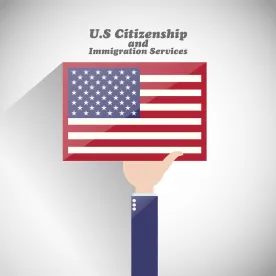USCIS expects to suspend biometrics requirements for H-4, L-2 and E-1, E-2, and E-3 Form I-539 applications beginning May 17, 2021, for at least 24 months. It will retain the discretion to require biometrics on a case-by-case basis.
The suspension is intended to eliminate the adjudication backlog that has prevented H-4 and L-2 spouses from receiving Employment Authorization Documents (EADs) in anything close to a timely fashion.
The suspension is expected to apply to these categories of Form I-539 applications if:
-
The application is pending as of May 17, 2021, and a biometrics appointment notice has not been received; or
-
The application is received by USCIS between May 17, 2021, and the expiration date of the suspension.
How USCIS will handle biometrics fees is not clear but guidance is expected.
Notice of the proposal came in a declaration from USCIS Service Center Operation Directorate Associate Director Connie L. Nolan in Edakunni v. Mayorkas, a litigation pending in federal district court in Seattle.
Background
In 2019, biometrics requirements were imposed on Form I-539 applications. This resulted in delays in processing H-4 and L-2 extensions and the dependent EAD applications. When the COVID-19 pandemic struck and Applications Support Centers that process biometrics closed, the delays mounted. On top of that, there were even printing delays. It was taking so long to get H-4 and L-2 EADs approved that individuals were losing their jobs and their benefits while waiting for the cards – even if they applied the full six months before their cards expired.
Suggested Changes
About 30 companies, including many large technology firms, wrote to USCIS on March 22, 2021, with some ideas on how to eliminate the current problem hamstringing them and many of their employees. They asked the Biden administration to consider the following:
-
Rescind the 2019 biometrics collection policy for EAD applicants because it is largely redundant. Most applicants have had biometrics collected as part of a consular visa application or another benefit application.
-
Provide automatic extensions of employment authorization for timely filed EAD applications as is done for TPS (Temporary Protected Status) EAD applications.
-
Allow applicants to file EAD renewal applications more than six months before their current EAD expires, giving USCIS more flexibility in terms of adjudication.
For now, USCIS appears to have chosen the first option on a temporary basis.




 />i
/>i

